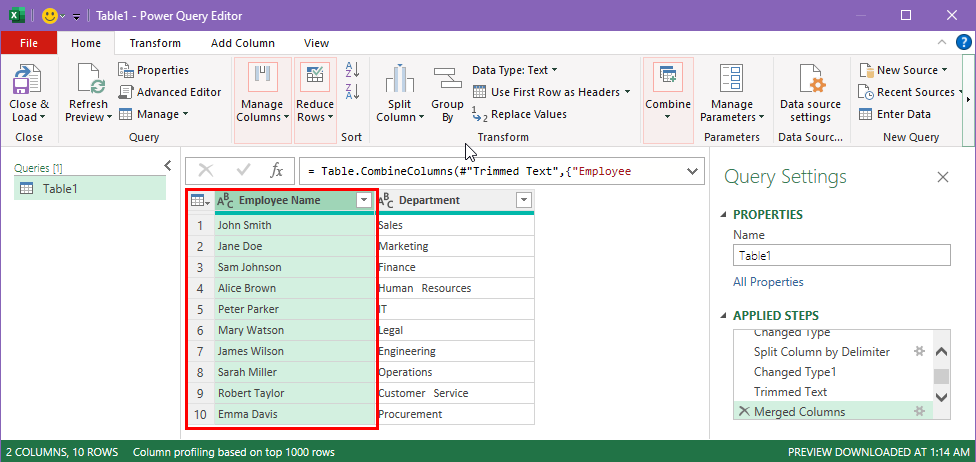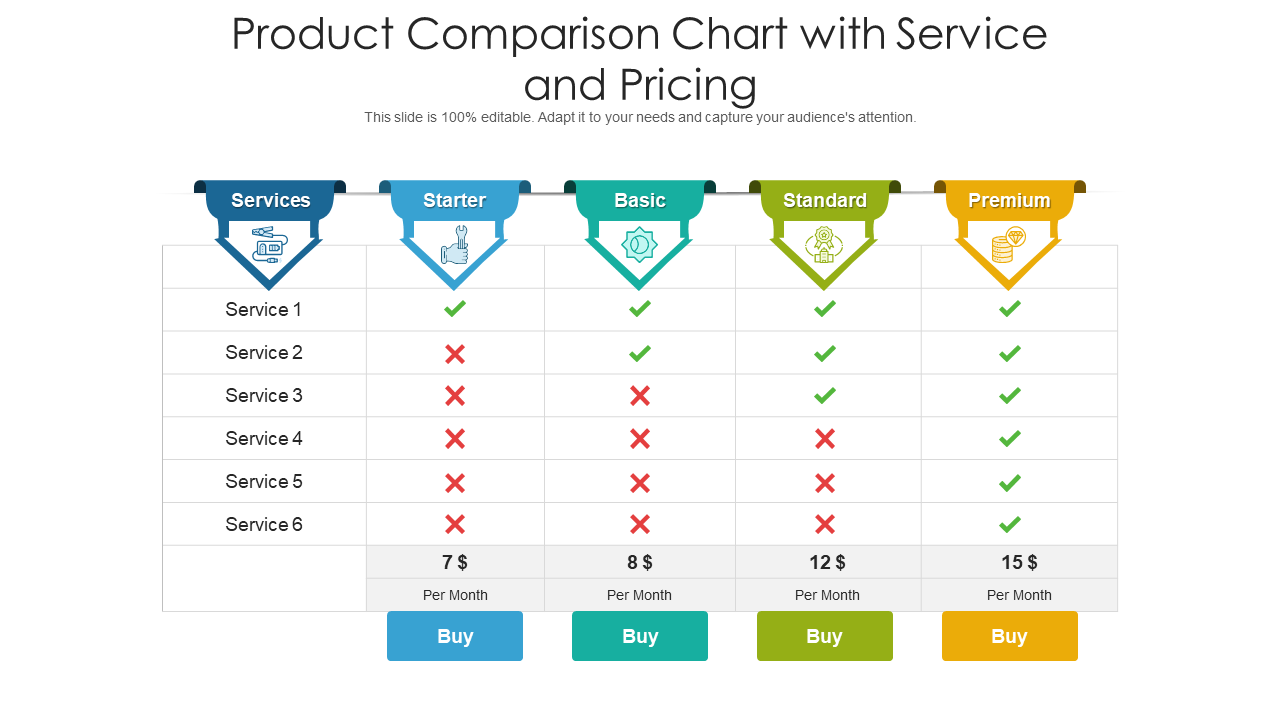Power Query: The Ultimate Row Removal Guide

Power Query, a powerful data transformation and preparation tool within Microsoft Excel and Power BI, offers a myriad of capabilities for data professionals and analysts. Among its many features, the ability to remove rows efficiently and effectively is a crucial aspect that significantly enhances data cleansing and preparation processes. This comprehensive guide will delve into the various techniques and best practices for removing rows in Power Query, ensuring that your data is accurate, clean, and ready for analysis.
Understanding the Power of Row Removal in Power Query

Row removal, or data filtering, is a fundamental process in data preparation. It involves identifying and eliminating unnecessary, duplicate, or erroneous data rows, ensuring the remaining dataset is accurate and reliable. Power Query provides an extensive toolkit for this purpose, allowing users to perform precise and dynamic row removal operations.
The significance of effective row removal cannot be overstated. It forms the foundation of data cleansing, enabling analysts to transform raw, messy data into a structured, meaningful format. By understanding and mastering the techniques outlined in this guide, you'll be equipped to tackle a wide range of data challenges, ultimately improving the quality and effectiveness of your data-driven insights.
The Basics: Using Basic Criteria for Row Removal

Let’s start with the fundamentals. Power Query allows users to remove rows based on simple criteria, such as specific values, data types, or conditions. This is an essential skill for any data professional, as it forms the basis for more complex row removal operations.
Removing Rows with Specific Values
One of the most common row removal tasks involves eliminating rows containing specific values. For instance, if you have a dataset with product sales and you want to exclude sales data for a particular product, you can use Power Query to filter out rows with that product’s name or ID.
Here's a step-by-step guide on how to achieve this:
- Open your data in Power Query.
- Select the column containing the values you want to filter on.
- Click on the Filter icon in the Transform tab.
- Choose Text Filters (or Number Filters if your data is numeric) and select the appropriate condition (e.g., Equals, Does Not Equal, etc.).
- Enter the value you want to filter on.
- Click OK, and Power Query will display a preview of the filtered data. Click OK again to apply the filter.
Filtering by Data Type
Power Query also allows you to filter rows based on data types. This is particularly useful when you want to exclude rows with certain data formats, such as dates, numbers, or text.
To filter by data type:
- Select the column you want to filter.
- Click on the Filter icon and choose Data Type Filters.
- Select the desired data type to include or exclude.
- Preview and apply the filter as needed.
Condition-Based Row Removal
Sometimes, you might want to remove rows based on more complex conditions. Power Query provides a flexible environment for creating custom conditions. You can use comparison operators (<, >, =, etc.), logical operators (AND, OR, NOT), and even text manipulation functions to create sophisticated filters.
For instance, you could remove rows where the sales amount is greater than $1000 and the product category is "Electronics."
To create custom filters:
- Select the table you want to filter.
- Go to the Add Column tab and choose Custom Column.
- In the Custom Column window, enter a name for your new column and an expression that defines your condition. For example, [Sales Amount] > 1000 AND [Category] = "Electronics".
- Click OK, and Power Query will create a new column with a Boolean value for each row, indicating whether it meets your condition.
- Now, you can use this new column to filter the data. Select the new column and click the Filter icon. Choose True to keep rows that meet your condition or False to exclude them.
Advanced Techniques: Mastering Row Removal with Power Query
While basic row removal techniques are essential, Power Query offers a host of advanced features that can further enhance your data cleansing capabilities.
Removing Rows with Regular Expressions
Regular expressions, or regex, are a powerful tool for pattern matching and manipulation. Power Query supports regex, enabling you to remove rows based on complex patterns within your data.
For instance, you might want to exclude rows where the customer's name contains a specific pattern, such as "Inc." or "Ltd."
To use regular expressions for row removal:
- Select the column containing the text you want to filter.
- Click the Filter icon and choose Text Filters > Custom.
- In the Custom window, enter your regex pattern. For example, to exclude rows with "Inc." or "Ltd." in the customer name, you could use (Inc\.|Ltd\.).
- Preview and apply the filter as needed.
Utilizing Custom Functions for Row Removal
Power Query allows you to create custom functions, which can be extremely useful for specialized row removal tasks. For example, you might have a dataset with a custom rating system, and you want to remove rows with ratings above a certain threshold.
To create a custom function for row removal:
- Open the Advanced Editor by going to File > Options and Settings > Options > Query Options and selecting Enable advanced mode.
- In the Advanced Editor, enter your custom function. For instance, to create a function that removes rows with ratings above 5, you could use the following M code: let Source = Excel.CurrentWorkbook(){[Name="Table1"]}[Data], "#custom" = each [Rating] < 5 in Source
- Close the Advanced Editor and apply the query.
Dynamic Row Removal with Conditional Statements
Conditional statements in Power Query enable you to create dynamic row removal operations. This is particularly useful when you have varying criteria or when the data changes frequently.
For example, you might have a dataset with sales data, and you want to remove rows based on the current month. By using a conditional statement, you can ensure that your data is automatically updated each month without manual intervention.
Here's how you can implement a dynamic row removal with conditional statements:
- Select the table you want to filter.
- Go to the Add Column tab and choose Conditional Column.
- In the Conditional Column window, set the column name and select the True and False expressions. For instance, you could use [Month] = "Current Month" as the True expression and 1 = 0 as the False expression.
- Click OK, and Power Query will create a new column with Boolean values based on your condition.
- Use this new column to filter the data as described earlier.
Best Practices for Effective Row Removal
While Power Query offers a wide range of tools for row removal, it's important to follow best practices to ensure your data cleansing process is efficient and accurate.
Create a Copy of Your Data
Always work with a copy of your original data. This ensures that your original dataset remains intact and allows you to experiment with different row removal techniques without the risk of permanently losing data.
Use Clear and Descriptive Names
When creating custom columns or functions, use clear and descriptive names. This makes your query easier to understand, especially if you return to it later or if others need to work with your data.
Preview and Validate Your Results
Always preview the results of your row removal operations before applying them. Power Query provides a convenient preview feature, allowing you to ensure that the filtered data aligns with your expectations.
Save and Document Your Work
Save your Power Query steps as a Query and consider documenting your work. This ensures that you can easily revisit and understand your data cleansing process, even if you return to the project after some time.
The Future of Data Cleansing: Power Query’s Role

As data continues to grow in volume and complexity, the role of data cleansing and preparation becomes increasingly crucial. Power Query, with its robust row removal capabilities, is well-positioned to play a pivotal role in this landscape.
By leveraging the techniques outlined in this guide, data professionals can efficiently transform raw data into actionable insights. The ability to dynamically remove rows based on various criteria not only improves data quality but also enhances the overall efficiency of data analysis processes.
Furthermore, Power Query's integration with Excel and Power BI ensures that data cleansing can be seamlessly integrated into the broader data analytics workflow, providing a unified and efficient platform for data preparation and analysis.
Conclusion
In the realm of data analysis, effective data cleansing is the cornerstone of accurate insights. Power Query’s robust row removal capabilities offer a powerful toolkit for data professionals to achieve this goal. By mastering the techniques outlined in this guide, you can confidently tackle a wide range of data cleansing challenges, ultimately driving more informed decision-making and strategic planning.
Whether you're a seasoned data analyst or just starting your journey, Power Query's intuitive interface and extensive capabilities make it an invaluable asset for data preparation. With its ability to dynamically filter and transform data, Power Query empowers users to unlock the true potential of their data, driving innovation and excellence in data-driven organizations.
FAQs
Can I undo a row removal operation in Power Query?
+
Yes, Power Query maintains a query history, allowing you to easily undo or redo any step, including row removal operations. To undo a step, simply click the Undo button in the Query Editor toolbar.
How can I remove multiple rows at once in Power Query?
+
You can remove multiple rows by combining multiple filters or by using the Conditional Column feature. For example, you can create a custom column with a condition that evaluates to True for rows you want to keep and False for rows to remove. Then, use this column to filter your data.
Is it possible to remove rows based on a range of values in Power Query?
+
Absolutely! Power Query supports filtering rows based on a range of values. You can use the Number Filters option and select Between to specify a range of values to include or exclude.
Can I remove rows based on text patterns in Power Query?
+
Yes, Power Query supports regular expressions (regex) for text pattern matching. You can use the Text Filters > Custom option to enter your regex pattern and filter rows based on it.
How can I handle dynamic row removal for changing criteria in Power Query?
+
Power Query’s Conditional Column feature is perfect for dynamic row removal. You can create a condition that evaluates to True or False based on your changing criteria. This ensures that your row removal operation is always up-to-date.



